#garden pests
Explore tagged Tumblr posts
Text

Death's head moth. Report of observations of injurious insects and common farm pests. 1893.
Internet Archive
#moth#moths#death's head#nature illustration#halloween#skull#skulls#garden pests#nemfrog#1893#19th century
399 notes
·
View notes
Text
I am reporting live from the SlugVillage, which is something we all agreed to rename this city into. There are slugs wilding in the streets, there are slugs on every strand of glass, if you stop and stand anywhere for a minute, a slug will find you. And climb you.
In this time of slugness I am still determined to grow those damn beans if it's the last thing I do, so I have been in the garden every morning at 6am, and every evening at 8pm, collecting endless amounts of slugs and relocating them to places that are not my garden. I have now confirmed that there is a limit of how many slugs a person can experience in a day without getting mentally affected by it; unfortunately I have breached this limit on the first day after rain. I come over there and there's a conference of 320 slugs in my strawberries, they're all discussing which ones of my plants to devour first. I have been trying to appeal to their emotions; every time I see them eating a baby plant, I go 'That is a baby! How could you?' and thus far they did not care for my antics. This morning I've seen a centipede strolling in my garden and I went 'What a beautiful and sleek creature, bless you!' and I don't even have a special place in my heart for centipedes, I was just so damn happy to see one creature that isn't a slug.
Other gardeners have also been doing the same thing as me, and constantly complaining about the biggest epidemic of slugs this place has ever seen. One of them is very smart, so she poured down sawdust around each of her bean plants, the idea being that slugs won't touch sharp stuff.
Yesterday morning I saw a slug going 'sawdust shamwust I have a bean plant I need to eat'. It slid directly on the sawdust without a care in the world.
I've even seen them eating potatoes! I could not believe my eyes, what are the potato bugs supposed to eat? They're gonna be out of a job! The slugs are not considering the economy and the potato bugs will go unemployed if this continues.
I believe that slugs need their designates spaces, that is not 'the community garden' and they need to change their dietary preferences because we all know this is not about survival. I've seen them eat nettle. They'll eat anything. But the garden is 'snacks', this is their version of gorging on potato chips and fries, they're eating fast food produced by human gardeners, it's not sustainable. They need to go back to their roots and by this I mean spain from where they were imported from and became invasive species immediately.
The only thing that could stop the slugs is scorching sun that makes it too hot and dry for them to live, but.. the forecast says rain. We shall continue being in the slug era.
51 notes
·
View notes
Text
Today, on bug I saw:

The cushiony cotton scale! It looks bizarre - we all thought it was a pupa, but no, that's the whole insect. It looks like fuzzy sweet bread.
Unfortunately our encounter did not end well, because it turns out that this insect is an invasive pest from Australia that damages plants by sucking their sap. And we don't want our pawpaw fruit tree getting taken over.
It sure is a cool looking insect though.
4 notes
·
View notes
Text

The Complete Book Of Garden Magic - Roy E Biles (1947)
4 notes
·
View notes
Text
9-5-2024 Garden and homesteading update,
Hello, hello!
Life's been keeping me a bit busy recently but I do have a bit of an update for the garden~
Finally Got manure in to fill in a few beds and top off rows. (Which I've started and got going to prep for winter)
Pulled everything but the carrots, cucumber, peppers and 1 tomato (tho the tomatoes on a wire line. I'm still thinking bout pulling it)
I found a few of the armenian cucumbers that might have viable seed, ive got to pull them apart and clean them tonight to dry and give a viability test. I'll leave the cucumbers growing for now. The pollinators and hummingbirds have been using them for shade and fuel. Plus I like the flush of lush foilage and ground cover. It's been extra hot this summer so we haven't seen as much produce as I usually crow about from them. When the weather starts going back to regulalry below 95*f I'm hoping to see more fruiting.
Started up a new bed in the garden. Its a raised bed, two boards tall. This one will be layered on the bottom as usual with cardboard thickly to repell and deter the grass a little bit. Instea dof paper shreds, i cracked up the sunflower stalks I've been saving up to fit the bed size and filled it a good bit with the smaller ones. Topping it off with the manur/compost. I also threw some of the dead cucumber vines with the sunflower stalks to sort of fill it. Not tight packed, just loosely. Just wanna see of it'll work similar to hugelkultur. (Link at end to Wikipedia page).
The sweet potato vines are starting to take off. Thankfully this means I'll have some greens to split between family and the chickens soon. Maybe even some spuds at the end of the season 🤞
The thyme plant kicked the can, the asparagus is ferning out, but not stalking. The basil is seeding pretty good. So with luck some wild seeded basil starts soon.
The sunchokes have stunted a bit, this week I'm gonna see about putting a shade up to see if that'll help them out.
The hollyhocks in the hen alley have been sort of taken over by grasshoppers. So not too much growth among them. Think I'll need to spend a few nights catching them, freezing them and giving them to the chickens for a little extra snack time delight. (Plus getting them out of the garden) I think at that time I'll also lay out some new cardboard as the ground cover has disintegrated pretty well. Looking good beneath on the soil.
Started filling in the area I wanted to put melons in, may instead end up using that area to grow winter veggies, like cauliflower, cabbage or broccoli.
Still need to mix the seed starting soil, cut up some cardboard tubes (gonna try to use them for some seed starting) and get those winter crops started up.
Getting ready to dig out my floral patch to plant elsewhere. (I've been waiting for cooler weather.)
And start up the new direct seed rotation plan (carrots, lettuce, radish, nasturtium and other)
And a few other minor tasks related to the garden and some major ones later too that I'm not gonna get ahead of myself yet on grandoise plans 😂
That's the garden update for now :)
🌱💚Happy Gardening and homesteading💚🌱
Links for additional infos:
https://en.m.wikipedia.org/wiki/H%C3%BCgelkultur
#homesteading#thestudentfarmer#self sufficient living#studentfarmer#self sufficiency#food#garden#gardening#low waste#chickens#urban green spaces#urban biodiversity#urban homesteading#urban gardening#urban farming#grow what you eat#eat what you grow#eattheweeds#city garden#garden pests#living with nature#armenian cucumber#carrot#raised garden beds#food preservation#food planning#living with the seasons
9 notes
·
View notes
Text
Assorted blurry but cute bug faces :3

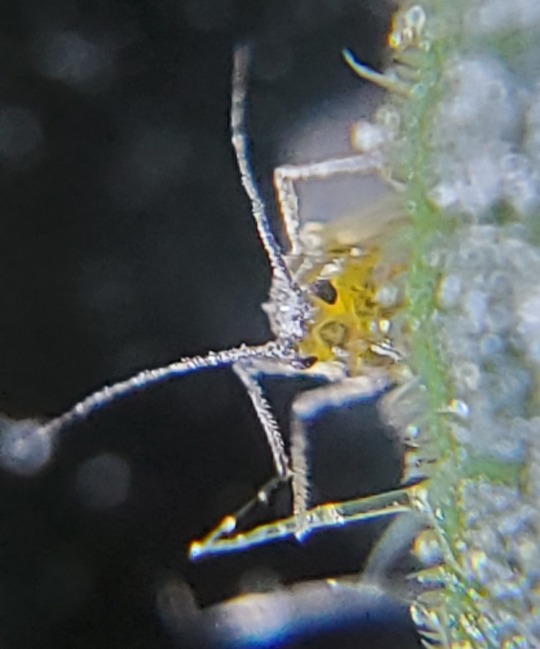


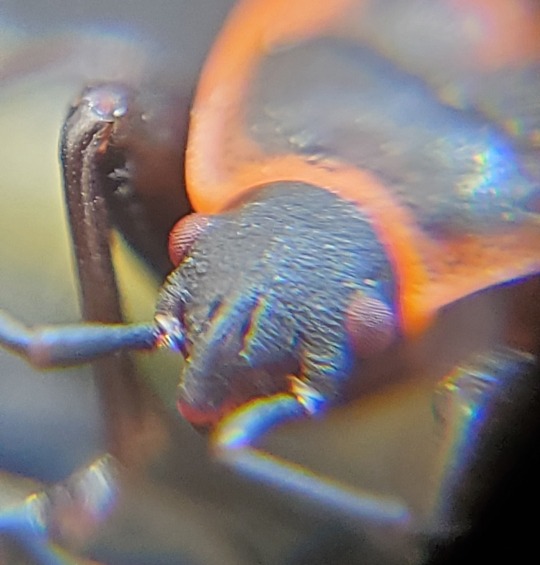


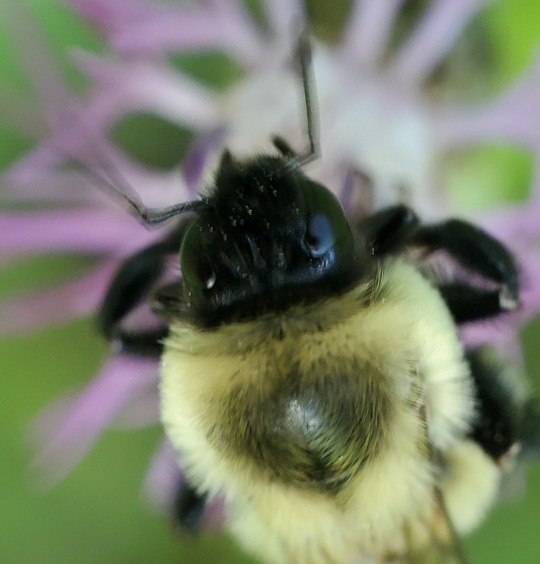
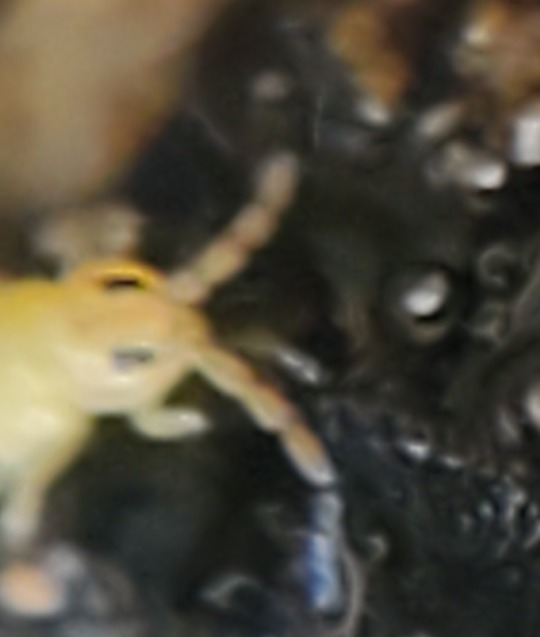
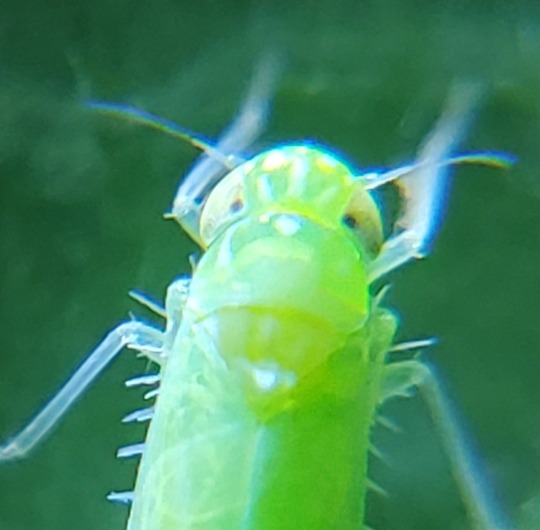
Whitefly (Trialeurodes vaporariorum)
Aphid (species unknown)
Eggplant leafroller moth (Lineodes integra)
Unknown lepidoptera species
Mediterranean red bug (Scantius aegyptius)
Armyworm moth (Mythimna unipuncta)
Fly in Sarcophagidae family
Common eastern bumble bee (Bombus impatiens)
Springtail (species unknown)
Leafhopper (Empoascini)
#bug faces#cute#nature#bugs#biodiversity#animals#entomology#inaturalist#arthropods#insect appreciation#insects#cute face#mugshots#garden pests#some of them anyway#aphids#whitefly#lepidoptera#diptera#blurry#because they're so small#i need to get a better macro lens lol#disney eyes#uwu#bugblr
41 notes
·
View notes
Text

I need to identify this beetle. There were several on the tomato plant last fall.
2 notes
·
View notes
Text
Woke up feeling steamrollered this morning so Seed Starting Thursday has been postponed until tomorrow. I did get a few garden tasks done though.

Two clumps of daffodils are flowering today. I've got a number of different varieties that bloom in succession so I'll probably have some kind of daffodil through May.

The harvest of salad spinach was twice the amount of last time. Some of the other varieties are starting to kick up their growth too with the warmer temps. I am going to use this harvest to make a few servings of spinach artichoke dip for a wild Friday night at home snack.

Opened up the tunnels to water and the transplanted Chinese broccoli and bok choy are loving their new digs, increasing in size by at least a third. But what is this?

Grrrr.
And then when flipping up the board to check the in-ground row of old mixed carrot seed I found this guy:

Yeah the chickens got a nice juicy treat. It was probably attracted to the moist darkness under the board, but I watched it actually munching on my carrot seed so I feel no remorse. It's an even toss-up whether the damage on the bok choy is slugs or roly-polys. On taller plants that they have to climb first you can tell by the slime trails, but here the leaf edge was touching the soil. I'll be putting a short board down as a slug trap and checking it in the morning.

A whole bunch more extra dwarf pak choi sprouted in the cold frame, so I had to put the regrowing green onions in their own small earthbox. Luckily I had one available since the cats destroyed the impatiens I was overwintering in it. They've actually almost regrown enough to harvest again, but I'll give them a few weeks to get settled in first.

And then I potted up these Black Beauty eggplants. Despite the dud cell, I still got nine plants out of this.

The Ping Tung eggplants need at least another week of growth before transplant. Conveniently, there are six pots left open in this flat and I have six seedlings. The two cells of Listada eggplant never germinated. That was my experiment with seed saving eggplants so was a bit of a bummer. May research what went wrong or I may just resolve to buy eggplant seed, it'll probably depend on need.
The native plants program at the library was a little disappointing. I was expecting an informational presentation on local natives for your garden. What it ended up being was a workshop on cold stratification using native seeds harvested the past fall by the presenter. So I came away with several varieties to put in my freezer, but no new information.
Ah well, it's fine and it was free. I'll be sowing some black-eyed Susan, prairie blazing star, purple aster, mountain mint, mist flower, foxglove beardtongue, and bee balm (a fuschia pink variety) in a few weeks once they've stratified. I already have some pale purple bee balm and I've grown black-eyed Susan, blazing star, purple aster, and a different variety of beardtongue in the past. The mountain mint and mist flower were pointed out to me as varieties that were a little more tolerant of part shade than any of the other varieties available so I'm going to try and start them in the spot where I moved two peonies from in the fall (for not being sunny enough). For all of these I'm planning on putting half the seed in trays inside and half direct sown outside. We'll see what works best.
#gardening#daffodils#garden pests#slugs#roly-polys#(which while detrivores ALSO will eat on living plants btw)#eggplants#potting up transplants#native species for your garden#cold stratification#we spread the seeds on damp paper napkins and put them in ziplock baggies for the freezer#the bags joined my poppyseed ice cubes that i had literally done that morning
2 notes
·
View notes
Text
i will know peace when ppl stop releasing nonnative insects in their gardens as "pest control"
#this post is about european and chinese mantids#also side note stop using the word pest#<- for some reading on that i recommend the following book#Pests by Bethany Brookshire#pests#garden pests#entomology#insect#insects#bugs#chinese mantis#european mantis#Tenodera sinensis#Mantis religiosa#nonnative#invasive species#nonnative species#native species
15 notes
·
View notes
Text

the sillies!!! i havent drawn these guys in a while, sorryyy ^-^;
#garden pests#i gave charlie piercings. it just felt right#charlie summers#oliver love#lucero flores#ocs#original character#celestial science#winter doodles
4 notes
·
View notes
Text
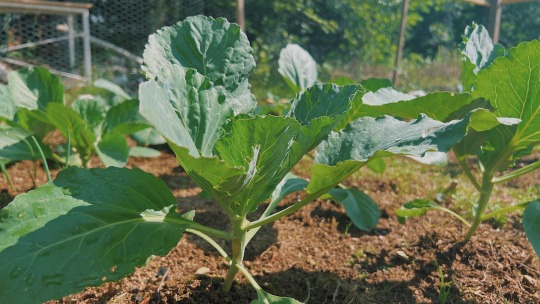
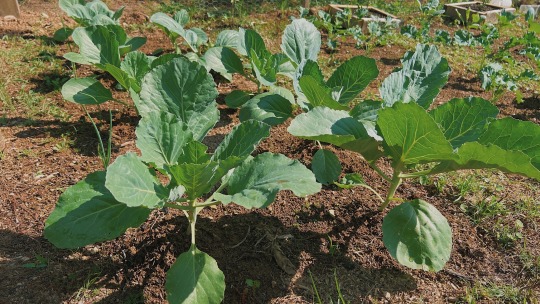

It’s been roughly a month and a half since I transplanted these cabbages in the ground. I originally planted 12 but right now there’s only 10 left due to slug damages. They’re about a foot tall and they are starting to form small cabbages. It’s so fascinating to watch these plants that came from teeny tiny seeds slowly growing the cabbage heads that I’ve only seen in supermarkets.

Slugs loves these plants. Just a couple of days ago they knocked a whole plant down by nibbling on the stem. Above is an example of a "minor" slug damage. They usually leave a gooey-mucus-like trail. I routinely go to the garden during sunset and first thing in the morning, specially on rainy days, to keep the slug population in check.

That little thing above is a flea beetle. Another creature who loves these types of plants. And below it is, again, a "minor" flea beetle damage. I bought diatomaceous earth to combat these pests but haven't used it yet because I haven't seen any severe damage thus far. Although it's safe for humans and very effective (based on what I've heard/read), it also kills beneficial insects in the process. So if I can avoid using it, that'll be great.
9-Jul-2023
#cabbage#garden pests#slugs#flea beetle#brassica#garden#garden 2023#gardening#gardencore#produce#veg#veg garden#vegetable garden#home garden#plantblr#gardenblr#garden blog#garden journal#cottage core#simple living#slow life#rural aesthetic
43 notes
·
View notes
Text

Partners... for bumper crops. Gesarol AK 50 insecticide ad - 1947.
#vintage illustration#vintage advertising#bug killers#insecticides#safe for humans when used as directed#geigy company#geigy#ddt#gesarol#pest control#ddt insecticides#farming#gardening#garden pests#farm pests
6 notes
·
View notes
Text

I spotted the squash vine borer. Sigh. Several of my summer squash had larvae poop and cracks, so I dug more today, and found a few larvae. Hopefully squished the rest in there. Sprayed more diatomaceous earth, cut some weaker leaves and tied the thicker stem to the bamboo poles.
Later, I'll add more dirt on the stem, and sow some radishes in between the squash. Why not?
But since the squash damaged are pretttyyyyy bad at the stem, I'm sowing 4 more summer squash to replace the ones out there if they go to the point of no return.
The chiffon Zucchini was hit the worst, so I'm not redoing it.
🤞🤞🤞
2 notes
·
View notes
Text
On rain-related pests in the garden
So this year has decided to have one of the most rainy springs I've seen. It's been raining for a week and a half, and the prognosis is rain for another week. It reminds me of the first year of my gardening; we also had incessant rain for almost a month, and everyone was saying it was the absolute worst year for gardening yet. Me, who has not gardened ever before, thought it was the best year ever because I had garden produce like never before in my life (because I never gardened before), and was extremely pleased with it.
So, what does constant rain mean for gardening?
It means different things for different plants. Peas, for example, absolutely love it. Wet and cold is their ideal growing conditions, they're having a great time and growing visibly bigger every single day. Peppers are also having a great time! They love being watered and being watered constantly makes sure they'll produce some good roots. I've also noticed cabbage and kale doing very well in the rain, potatoes seem pleased, and all of the squash and the beans I've planted are coming out of the ground, and I'm guessing they're growing roots and waiting for sunshine to do better. Tomatoes, however, are not pleased at all. They're prone to getting sick if their leaves get water and then dirt on them, and since they're all small and close to the ground, they're getting dirty easily. They're also struggling to draw enough nutrients from the ground in the cold, so some are turning black, and others are a little frozen in time, just waiting until it's sunny again so they can grow.
There's a common problem in the community gardens, and people's gardens in general, where this much ran can cause a flood, meaning your plants can get their roots and stalks completely covered in water, and they do not enjoy or tolerate that. Plants that are drowning end up with their roots rotted away; it can happen to seeds as well, if they're completely underwater, they'll rot before managing to sprout.
There's another, equally big problem with this much rain – the slugs are thriving. Slugs have gotten into everyone's garden, and they're eating, well, almost everything in sight. I have had a good share of my baby bean plants eaten away, and I'm seeing big pieces of my baby cabbages missing. Beans seem to be their favourite, they're focused on annihilating them instantly, but they'll also happily eat strawberries when ripe, lettuce, cabbage, peppers, green beans, and anything that is pulled out of the ground and rotting. I actually found most of the slugs in my garden feasting on some old plants and weeds I pulled out that started rotting, there's something irresistible in it to slugs, apparently. So what can you do about slugs?
There's many tricks and methods commonly used and shared, like, put a container of beer in the ground, and they'll all drown in there. They can get picked off and eaten away by a specific variety of ducks. Some people will grow plants that are specifically alluring to slugs to distract them from their other garden produce, others will just go ahead and use diatomaceous earth or some kind of poison to get them to go away. I've never tried any of that; my true and tried method is picking the slugs off, and putting them somewhere else. It takes a lot of dedication and time, but it seems to work; if you're constantly in the garden and picking slugs away, they don't manage to reproduce, so you don't have to deal with their babies next year. With this much rain though, you'll get slugs no matter what you do, they can easily slide to your garden from any patch of grass nearby. Their eggs can also last for several years underground so eradicating them is completely impossible.
If you're trying to pick off your slugs, you need to know how to find them; slugs are not out there and eating your produce all day. They come out early morning, late evening, and after the rain stops. I will usually pick early morning or late evening to visit the garden, and pick them off once a day. It's good to remember to take some gloves so you do not have to deal with the slime (though apparently it's very healthy for the skin), and it's good to have a little container to put them in, so you can easily gather a lot before taking them away.
I found it's easier to find slugs if you're out there weeding and fertilizing, then you catch glimpses of them more easily than when you specifically go and look for slugs. We humans have the advantage of seeing the world from way higher above than slugs, and we tend to move a bit faster, so walking for 2-3 minutes and releasing slugs away from the garden, can disorient them from easily finding your garden again; it's likely they'll find something else to eat closer to their destination. I've never had slugs return in any significant number, it's more likely that you'll get new slugs who are just living closer to your garden.
From the book about 'pests' I've read recently, it's described that killing them largely does not work at all, because it's the food source for the animals that determines how fast they reproduce. So I don't think annihilation is possible, if you're creating a food source, they'll take it as a hint to reproduce at a higher rate, since resources are made available for them to do so. If you're introducing a species that is a predator, you have to count on that species reproducing massively as well, as you've put them in an environment with a large food source. Dislocating the food source, making it unavailable, or dislocating the animal that is eating your produce, so they can't find it again, could potentially hint them into slowing down reproduction, as they're not seeing any food source nearby, I think that's why this method works.
Another problem that is appearing in the garden as the result of the ongoing rain are ants. Ants by themselves are not that harmful to plants, but you know what they do? They'll farm leaf-lice on your plants. They'll find a plant and let lice put their eggs there and then guard the eggs and have bunch of lice eat all of your plants and it's terrible. So ants also need to get a little displaced and find somewhere else to build their farms other than your garden! I've not figured this one yet; I know you can mix 2 anthills in order to create an ant war and have them annihilate each other, but I don't want to make that kind of historical ant drama. I'll look into other options!
#garden pests#gardening#growing food#organic gardening#rainy season#gardening in the rain#dealing with slugs#dealing with ants#how not do go about pests#rain flooding the garden#significance of ongoing rain in the gardening season
22 notes
·
View notes
Text
Last year I had a huge issue with rats eating all my tomatoes and lettuce. Turns out none of my neighbors have been doing anything to reduce the rat population, just me. Which is how I ended up catching 12 rats in two weeks, Benji caught one also. As I can't realistically remove all the rats on my own if no one else on the street is doing things to reduce or discourage them it is time to go extreme.
This year to prevent the loss of my harvest from the fuzzy rodents I am building a rat proof garden enclosure. It is basically a bunch of frames to go over the garden like a cold frame or greenhouse only with wire mesh instead of glass or acrylic panels.
Something like this is my plan. Only substituting hardware mesh instead of chicken wire for added durability.
youtube
4 notes
·
View notes
Text
Hello everyone,
A bit of a garden, chicken and otherwise update:)
First up! Garden stuff update :).

Our first cucumber! This pic is a few days old, so it's just about ready to pick now and I've spotted 2 more coming in too :)

First patty pan squash :D with luck this years the year we are able to actually eat a few squash from the plants before the squash beatles arrive! :D

Sweet potato starts in the ground. I may need to put a bit of a shade cover and will be planting at least one more tuber to kick start the greens.

These very pretty wasps (who I believe is a yellow paper wasp if internet search has led me well.) Arrived. Very beautiful, but unfortunatly like the yellow bellied assassin's I will need to keep an eye out for them and potential nesting habits. For the safety and comfort of human neighbours and self, rather than protecting the rare native Bees we see. Thankfully It looks like this one was just hanging out for a few minutes.
Three more assassin's were spotted and swatted over the last few days. Morning has been the best time to look for them so far as I can see or tell.

My funny shade/seed/chicken bed. It looks a bit rough but the goal for this area is mostly to fill the empty space with something that is
1) edible to us or the chickens.
2) managing some sort of eco aspect of our space (shade, water retention, soil cover, beautification)
3) medicinal in some way ( soapmaking or makeup)
4) is fairly leave it alone/set it and forget it.
I'll need to reseed some new stuff soon though as the kale and chard are just about done I think.

Some of the tossed out sunflowers by the watermelon patch.
The melon patch I started (that the chcikens dug up entirely 😭 ) is being fully dug out right now to make a better grow space long term. Given that it's hot out (already 100*f regulalry) and daily life business, I've been working on it as the sun's been going down. It's taking a bit, but a bit at a time makes the work pass by. The dirt being dug out is being used to fill in chicken potholes for the yard and coop. When it's fully dug out I'll be making a similar growbed box like I did for the sweet potatos. Most likely also with a short shade cover.

And last, a chick pic update :) these ones have been much hardier than the last batch so far and a lot less skittish. They got their first hand feeding of crickets and mealworms, plus some peices of apple.
That's it for today
🌱🌻Happy Homesteading and Gardening 🌻🌱
#homesteading#thestudentfarmer#self sufficient living#studentfarmer#self sufficiency#food#garden#gardening#low waste#chickens#chick pic update#garden update#urban green spaces#urban biodiversity#urban homesteading#urban gardening#urban farming#insects#insect biodiversity#use it wisely#smalls scale differences#living with nature#garden pests#seed collector#backyard flock#backyard solutions#food desert#local food system#grow what you eat#feed yourself
8 notes
·
View notes